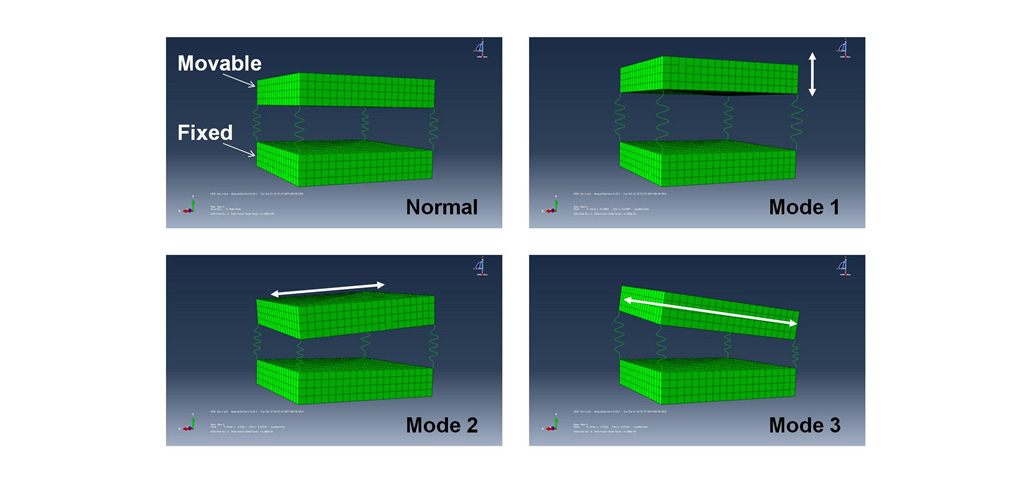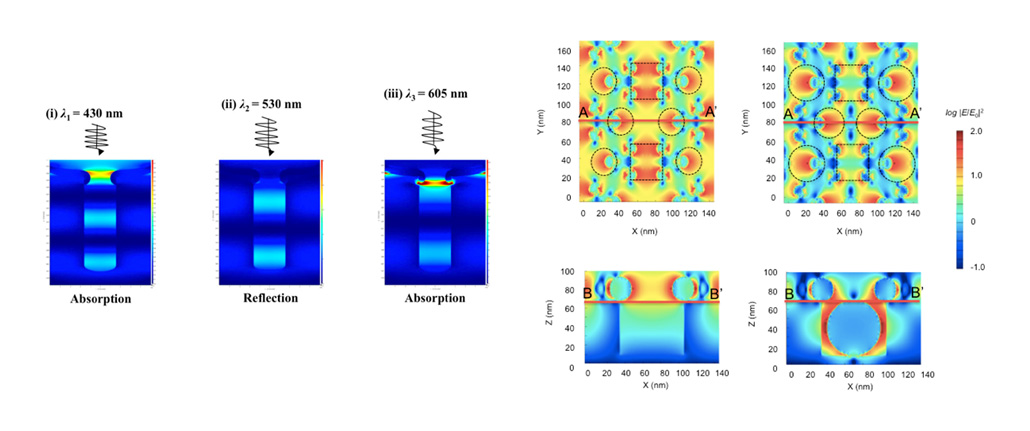Sungkyunkwan UniversityNanoEnergy & NanoSensors Laboratory Lab
Research
Research Field
Research Field
Design Simulations

Mechanical simulation
The finite element method (FEM) is a numerical method for solving problems of engineering and mathematical physics. Typical problem areas of interest include structural analysis, heat transfer, fluid flow, mass transport, and electromagnetic potential. The finite element method formulation of the problem results in a system of algebraic equations. The method yields approximate values of the unknowns at discrete number of points over the domain. In our group, we utilize a FEM simulation tool by midas NFX (Midas IT Co.) to objectively understand the relationship between mechanical loads and formed stresses on nano/micro-scaled materials to evaluate durability and stability of objects. Furthermore, we can estimate the functionality of mechanical energy harvesters with visualization of surface area and strain in material point of view.

Electric field visualization
To properly study the energy harvesters, we calculate the distribution of electric fields using multi-physics simulation software (COMSOL Multiphysics, COMSOL Inc.). The visualization of electric field can help to estimate the migration direction of electrons and performance of devices during operation.

Vibration simulation
The vibration energies are existed in wide ranges with different sources. To effectively utilize vibration energy, we design our energy harvesters based on vibration simulation using numerical (COMSOL Multiphysics, COMSOL Inc.) and mechanical simulations (ABAQUS, Dassault Systèmes).

Optical simulation
The optical simulation is required to evaluate and estimate the plasmonic characteristics. We can presume the “Hot spot” of nanoparticles or SERS substrate under specific wavelength of lights by visualizing the electromagnetic field with software called FDTD solutions (Lumerical Inc.).


